The procedure for controlling a tripod barrier turnstile
The Introduction of the procedure for controlling a tripod barrier turnstile
The procedure controlles a tripod barrier turnstile for the cyclical release of a walkway, with an associated control system, the turnstile system incorporating a plurality of blocking arms that are displaced at an angle relative to each other, each of which defines a blocking position, with a drive motor, and an angle of rotation identification system, and in which, after a positive result to monitoring, each blocking arm is first rotated by the application of an external force, and then by the drive motor, as well as to an automatic turnstile that can be controlled by the procedure.
The tripod barrier bidirectional turnstile locks in the stop position, provided with a torsionally elastic coupling that permits a slight amount of rotation despite the fact that the blocking arms are locked, and is monitored by an angle of rotation identification system. The locked stop position is held by an electric motor which, once the control system permits passage, is rotated further into the next stop position after the user pushes against the turnstile. In the event of illicit rotation the motor is not started but reinforced by a mechanical brake.
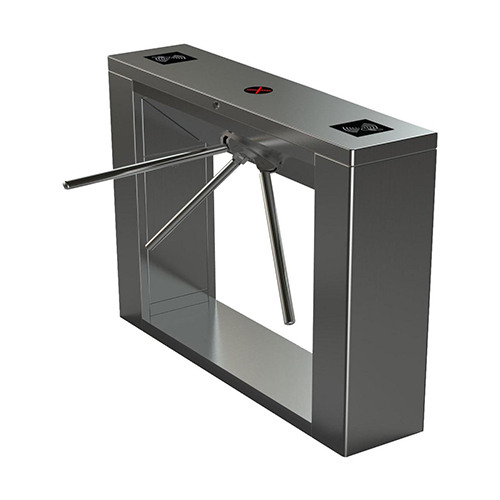
The tripod barrier turnstile gate that is powered by a motor, and the motor is started after an impulse that is provided by the user. A brake is triggered electrically so as to act counter to any illicit rotation.
The tripod gate turnstile with access control, in which the stop position is fixed by means of an electronically controlled brake. In the event that unimpeded passage is to be provided, slow and continuous operation by means of a motor can be effected.
In the case of the monitored passageways that provide for controlled passage by electrical turnstiles, on the one hand the behaviour or the customary actions of the users, and, on the other hand, specific safety criteria, have to be considered. The tripod turnstile barrier that is released as a result of positive monitoring may not be rotated immediately by a motor; rather, it must be rotated by the user as soon as he is ready to pass through it. In this case, the rotation of the turnstile that has been released is effected by the pressure of the user’s body against the blocking arm, when the locking resistance must be overcome. Only the overcoming of this locking resistance indicates, on the one hand, readiness to pass through, and, on the other hand, the correct position of the user, so that the subsequent motorized movements takes place at the anticipated time. Overcoming the locking resistance can be problematic, not only for children, but also, in particular for adults at the access points to T-bar ski lifts, when it must not be forgotten that the following blocking arm swings into position behind the user.
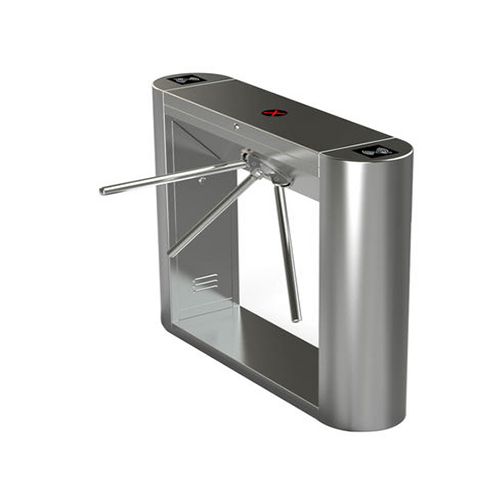
The procedure for controlling a tripod turnstile gate and a tripod gate turnstile that is controlled by the procedure, which better meets the demands imposed upon it. This has been achieved in that when the results of monitoring are positive, each blocking arm is moved from the blocking position into a subsequent stop position and in that after the application of an external force it is rotated out of the stop position until the next blocking arm is in the lock position.
The stop position that is located after the lock position ensures that if the results of monitoring are positive, the blocking arm is first moved into the stop position, when this movement is not only felt by the user, but is also visible to him. He can then adopt the correct position that makes passage possible without any problems and push against the blocking arm that is again stationary in the stop position, whereupon the blocking arm can be further rotated by means of the motor. However, in the stop position it is not necessary to overcome a great resistance in order to indicate readiness to pass through the turnstile because the user has only advanced as far as the stop position as a prerequisite for doing this. Now all that is required is a gentle touch on the blocking arm, which can be managed by users who are on skis, and on gently inclined ground, by small children as well asby adults, without any difficulty.
The tripod barrier gate that can be controlled by this process is characterized in that the automatic turnstile incorporates a stop position that lies at an angle after the blocking position; in this position, the drive motor is stopped until an external force is applied. Since it is intended that, in the blocking position,a higher resistance has to be overcome in order that the turnstile is, at least, very difficult to turn if it is not monitored or if the results of monitoring are negative, it preferably incorporates a brake, in particular an electromagnetic brake, which is activated in the blocking position. In particular,a DC motor is used to power this, and this can be short-circuited in the stop position.
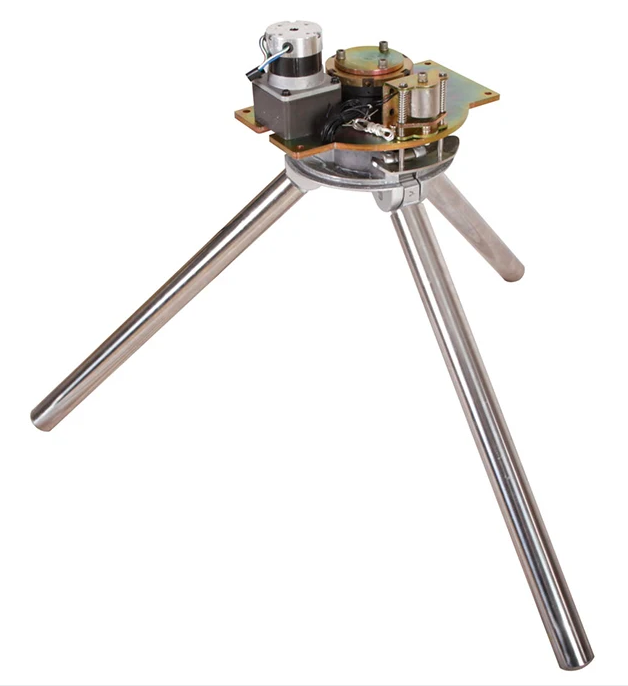
The detailed description of the procedure
A passageway has a waist height turnstile, the three blocking arms, and the blocking arm that points upwards is located in a blocking position that is located at an angle of approximately 10° ahead of a stop position. The waist high turnstile, which is driven by an electric motor, is halted in the blocking position of each blocking arm by means of an electro-magnetic brake, the motor being stationary during the movement of the brake. As soon as the control system that is associated with the path turnstile permits passage along the walkway, the brake is released and the motor rotates the particular blocking arm from the blocking position into the stop position, in which the motor comes to a standstill, and, in particular, is short-circuited. At this time, the user must push against the blocking arm, whereupon the motor is switched on once again. The brake remains released in the stop position. The pressure that is to be exerted on the blocking arm is very small, and for this reason can be generated without any problem even under unfavourable conditions. The motor, switched on once again, rotates the turnstile and permits passage, until such time as the next blocking arm moves into the blocking position, in which the brake is reactivated. Precise positioning of the blocking arm in the blocking position and in the stop position is not of critical importance. Thus, the blocking position or the stop position can be perpendicular to the direction of passage. Of course, intermediate positions, as well as other values for the angle, are also possible.
The tripod gate outdoor turnstile is provided inthe customary Kay with a housing, within which a bearing shaft with a rotating disk and the blocking arms that extend from this are all arranged. It is preferred that the shaft extend obliquely, and the blocking arms do not extend radially from the rotary disk , so that the blocking arm that is in the blocking position in each instance is almost horizontal.

Between the bearing shaft and the motor output shaft there is a bevel gear train. The teeth of the pinion on the bearing shaft having an associated angle of rotation identification system that determines the particular angle of rotation of 110° and 10‘. The motor output shaft supports the pinion that engages with the pinion, a mechanical return lock, which ensures that rotation can only take place in one direction, and which prevents rotation in the illicit opposite direction, as well as the electro-magnetic brake , and is connected through a reducing gear to the motor .
The construction is approximately symmetrical with respect to the bearing shaft, the motor and, on the other hand, the brake , being arranged in the housing. Force is transmitted by way of a drive chain that connects the pinion on the motor output shaft , the pinion on the bearing shaft, and a pinion on a brake shaft, which cabe secured by means of the electromagnetic brake . The three pinions are configured as chain wheels (cogs), and the chain follows a path that is eliptical-oval. In the intermediate runs, on the one handthe angle of rotation identification system, which controls the motor and the brake, and, on the otherhand,a direction of rotation identification system, which controls the brake if the turnstile is rotated in a direction that is not permitted, are associated with the drive chain in the intermediate runs. In place of the electro-magnetic brake and the electric drive motor, it is possible to use, for example, hydraulically powered brakes and motors.
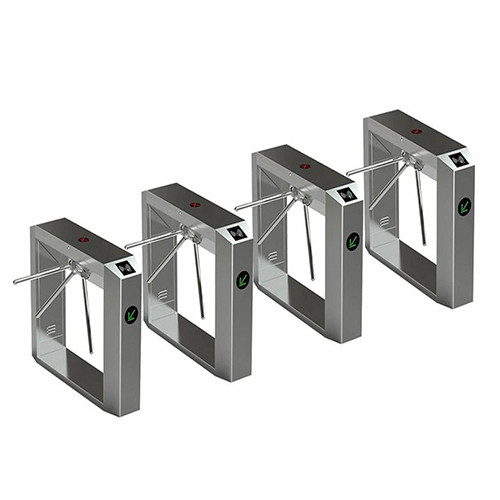
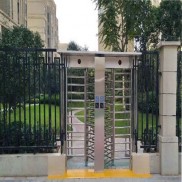 Double Lane Full Height Turnstile Gate for Residential Area
Double Lane Full Height Turnstile Gate for Residential Area
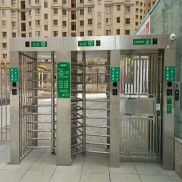 Dual Lane Tandem Full Height Turnstile Gate for Industry Park
Dual Lane Tandem Full Height Turnstile Gate for Industry Park
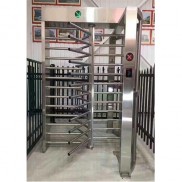 Single Full Height Security Turnstile for Office Buildings
Single Full Height Security Turnstile for Office Buildings
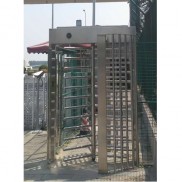 Motorised Double Full-Height Turnstile for Office Buildings
Motorised Double Full-Height Turnstile for Office Buildings







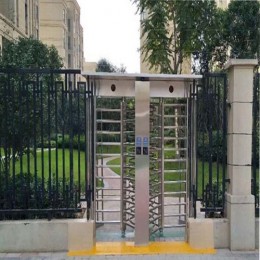
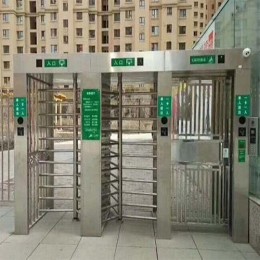






Please leave a message if you are interested in this model